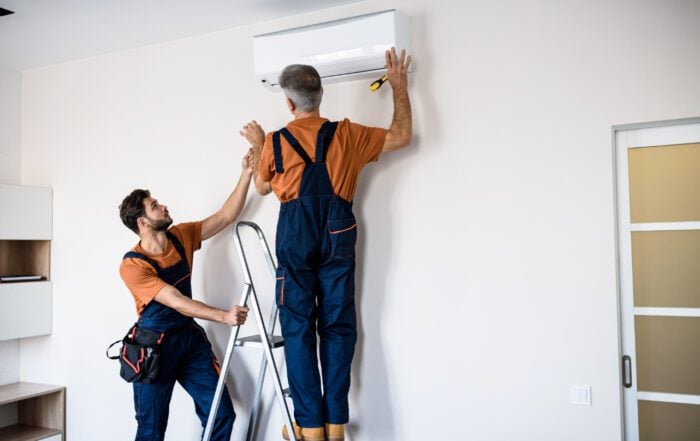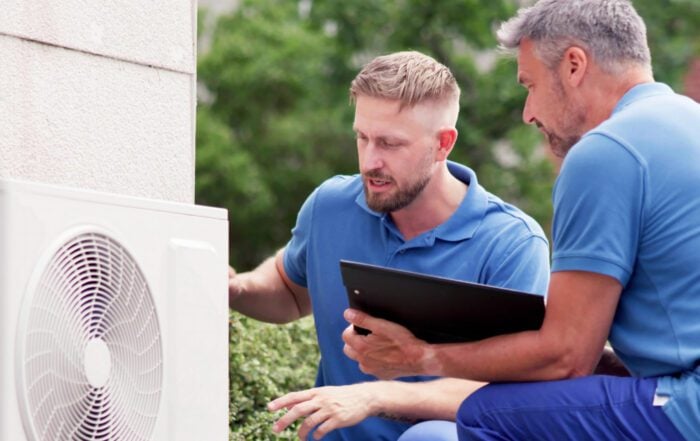The raging Midwest winter is on its way, and chances are you’ve already turned your furnace on for the season. There are some conflicting predictions for what this cold season will look like, but no matter the outcome, one thing is for sure: you still want to save on your heating bill as much as possible.
Our first reaction when the temperature starts dropping is to turn the furnace up to match the summer heat we’re now missing. This, of course, hikes up the energy consumption and, in turn, the bill.
But rather than increase the heat of our homes to equate to an island in the tropics, there are a few things we can do to stay comfortable while also keeping our wallets happy.
Steps to Savings
Dress for the Weather
During the warmer months, we get used to t-shirts, shorts, and flip-flops, and we don’t want to give that up. But swapping those out for socks and sweaters will let you drop the temperature in your home a few degrees and still be comfortable.
Your home should also dress for warmth.
While hardwood floors look appealing, they do nothing to keep heat in. If you have carpet, you’re good to go; but if you have bare floors, add some area rugs to help insulate the room.
Having insulated or heavy curtains on your windows also helps. Leave them open during the day to allow the heat from the sun to warm up the home, and close them at night to trap in the heat. You can also use clear plastic film to cover your windows which will help keep heat in as almost a quarter of warm air is lost through poorly insulated windows.
This also includes making sure all vents are free from furniture possibly covering them. When there are items like couches and bookshelves blocking your vents, the warm air becomes obstructed and cannot access the room freely, forcing your HVAC system to work harder to reach the set temperature.
Keep Filters Clean
We’ve covered this topic many times before (like here and here), but we can never say it enough: change your air filters regularly.
An old, clogged filter makes it difficult for air to pass through, causing your system to work harder. With all the energy it’s forced to consume, it will drive up your heating bill.
Depending on your filter size and MERV rating, it should be changed every 1-3 months; because your heating system is used more frequently in the winter, your filter should be checked and possibly replaced every month.
Fans Are Your Friends and Enemies
As we all know, hot air rises. This can have an adverse effect on your system as you’re continually losing warm air, and it’s always working to replace it. A quick and cost-effective solution is to run your ceiling fans in reverse – this helps to push warm air back down to where it should be.
Kitchen and bathroom fans, on the other hand, are your mortal enemies during the cold season. While they help to suck out unwanted odors, they steal the warm air as well. Use these minimally to keep the heat in your home.
Thermostats Are a Key Component
Lowering your thermostat just a couple degrees can drastically cut down on energy consumption. Consider dropping it while you’re asleep or away to conserve energy.
And if you don’t already have a programmable thermostat, consider investing in one. It will make setting the temperature for your time away from home much more convenient – simply input your schedule into the thermostat, and it will automatically adjust the temperature while you’re at work or asleep.
How is Your Insulation Holding Up?
Insulation requirements are different based on region and may have changed since your home was built. If your home has sub-par insulation, you could be losing a lot of heat. This includes your access door – it’s often forgotten about and can be the source of heavy drafts.
To see what the requirements are in your zip code, visit the Department of Energy website.
The Outside Affects the Inside, Too
Utilities have to have an access point for entering your homes, and that usually results in holes in your exterior wall. They’re filled in during installation but can often be done in a rush. Cracking and peeling then occurs, leaving you vulnerable to heat-stealing drafts. Make sure you reseal the area before the Cleveland winter strikes.
There’s also the arrival of the holidays right around the corner, and that means decorating. If you plan to decorate using lighting, use newer LED lights – they use about 75 percent less electricity than older ones.
Check the Odds and Ends
While many existing homes have fireplaces, they’re not often in use. Make sure the damper is tightly shut when you’re not using the fireplace so your warm air isn’t lost through an open vent.
Heat is also lost through leaks in ductwork. If you can’t locate it or fix it yourself, call a professional to inspect it for you.
How old is your weatherstripping? If it’s worn down, cracked, or pulling away from doors and windows, it can let in drafts from outside air. A high percentage of your heat can be lost through these drafts, which means you need to replace the weatherstripping or fix it. The same goes for any gaps under doors and electrical outlets on outside walls.
Address Your System
How old is your heater? Just like everything else, your heating unit has a lifespan. If you’ve hit it or are past it, the unit should be replaced. Newer units are much more energy efficient than outdated ones; it’ll cost more upfront, but you’ll save in the long-run.
Always Have a Professional Take a Look
Even with all of these steps, there are still a few things that you won’t be able to remedy yourself. Have an HVAC professional run a maintenance check of your system every year to make sure everything is functioning as it should – if there are any issues with your system, even ones you may not have noticed, it can increase your energy consumption.
You may spend a little up front for an inspection and repairs, but your utility bills will thank you.
Give us a call to schedule a time for a system tune-up so you can save on your energy bills this winter.

Have Any Questions?
If this is an emergency please call 440-937-9134.
Otherwise, please feel free to call us or submit this form to schedule an appointment for service or request an estimate. We will contact you shortly!



